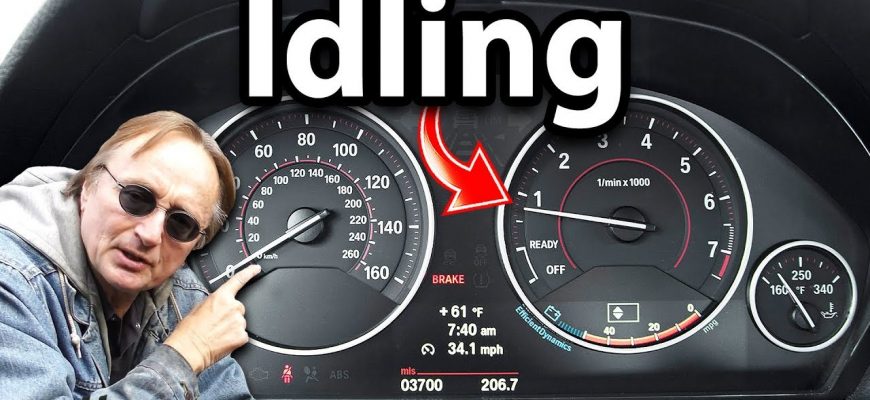Leaving your car idling while parked might seem harmless, especially for a quick task like grabbing coffee. However, extended idling can lead to significant damage and negatively impact your vehicle’s lifespan. There’s no single answer to how long is “too long,” as several factors influence the potential harm. Let’s break down the key considerations.
Factors Affecting Idle Time Limits
- Vehicle Type: Newer vehicles with advanced engine management systems generally tolerate idling better than older models. However, even modern cars have limits.
- Engine Condition: A well-maintained engine is more resilient to prolonged idling than one needing repairs. Pre-existing issues might be exacerbated.
- Ambient Temperature: Extreme temperatures, both hot and cold, put added stress on the engine and its components during idling. Hot weather can lead to overheating, while cold weather can cause increased wear.
- Idling Duration: While short periods are usually fine, extended idling (more than 10-15 minutes) increases the risk of damage.
- Fuel Type: The type of fuel used also plays a minor role. Lower-quality fuel might not lubricate the engine as effectively during idling, potentially increasing wear.
Potential Damage from Prolonged Idling
Extended idling can cause several problems:
- Increased Wear and Tear: The engine runs without the benefit of airflow from driving, leading to increased friction and heat buildup. This accelerates wear on internal components.
- Wasted Fuel: Idling consumes fuel without providing any forward movement, resulting in unnecessary expense and environmental impact.
- Overheating: Especially in warm weather, the engine can overheat without sufficient airflow for cooling. This can damage critical components, including the engine block and head gasket.
- Fouled Spark Plugs: Unburnt fuel can foul the spark plugs, leading to misfires and reduced performance.
- Battery Drain: While the alternator charges the battery while the engine runs, prolonged idling can deplete the battery if the electrical load is high (e.g., headlights, climate control).
- Excessive Emissions: Idling produces more pollutants per mile than driving, contributing to air pollution.
Best Practices
To minimize damage, avoid prolonged idling whenever possible. If you need to keep your engine running for a short time, try to:
- Turn off unnecessary accessories like headlights and air conditioning.
- Keep the idling period as brief as possible.
- Regularly maintain your vehicle to ensure it’s in optimal condition.
Ultimately, minimizing idling is the best way to protect your car. If you anticipate needing to run the engine for an extended period, consider alternative solutions like using a remote starter (where available) or simply turning the car off and restarting it later.
Specific Scenarios and Solutions
Let’s examine some common scenarios where people might consider idling and offer better alternatives:
- Warming up the car in cold weather: Modern engines don’t require extended idling to warm up. Briefly driving the car is far more effective and gentler on the engine. The engine will reach optimal operating temperature much faster this way.
- Waiting for someone: If you’re waiting for a short period, consider turning off your car. If the wait is longer, find a place where you can safely turn off your engine and wait without causing inconvenience.
- Using the car’s heater or air conditioner: While tempting to idle to use the climate control, it’s more efficient to run the system only after the engine has reached operating temperature. Consider pre-conditioning your vehicle with a remote starter (if equipped) to have the desired temperature ready when you get in.
- Running errands with frequent stops: In situations with frequent short stops, assess if idling is truly necessary. Often, the fuel saved by turning the engine off outweighs the slight inconvenience of restarting it.
Legal Considerations
Some jurisdictions have laws against idling for extended periods, particularly in environmentally sensitive areas or near schools. These laws often specify time limits and may include fines for violations. It’s wise to check your local regulations to understand any restrictions in your area.
While short periods of idling are generally acceptable, prolonged idling puts unnecessary stress on your vehicle’s engine and components, leading to premature wear and tear, reduced fuel efficiency, and increased emissions. By understanding the potential risks and adopting alternative approaches, you can extend the life of your car and save money on fuel and repairs. Prioritizing short idling periods and regularly maintaining your vehicle will ensure its optimal performance and longevity.










Great information! I never really thought about the impact of idling on my car’s engine. This article definitely makes me more aware of my driving habits.
Very informative and easy to understand. The points about fuel waste and potential damage are particularly concerning. I’ll be more mindful of my idling time from now on.
This article provides a clear and concise explanation of the negative effects of prolonged idling. The breakdown of factors influencing idle time limits is particularly helpful.
A well-written and practical guide to understanding the consequences of excessive idling. The potential damage section is particularly impactful.
Excellent article! The inclusion of different factors affecting idle time limits, such as vehicle type and ambient temperature, adds valuable context.
This article is a valuable resource for car owners. The clear and concise writing style makes it easy to digest the important information.
I appreciate the comprehensive approach to this topic. The article effectively highlights the various aspects of idling and its potential negative consequences.